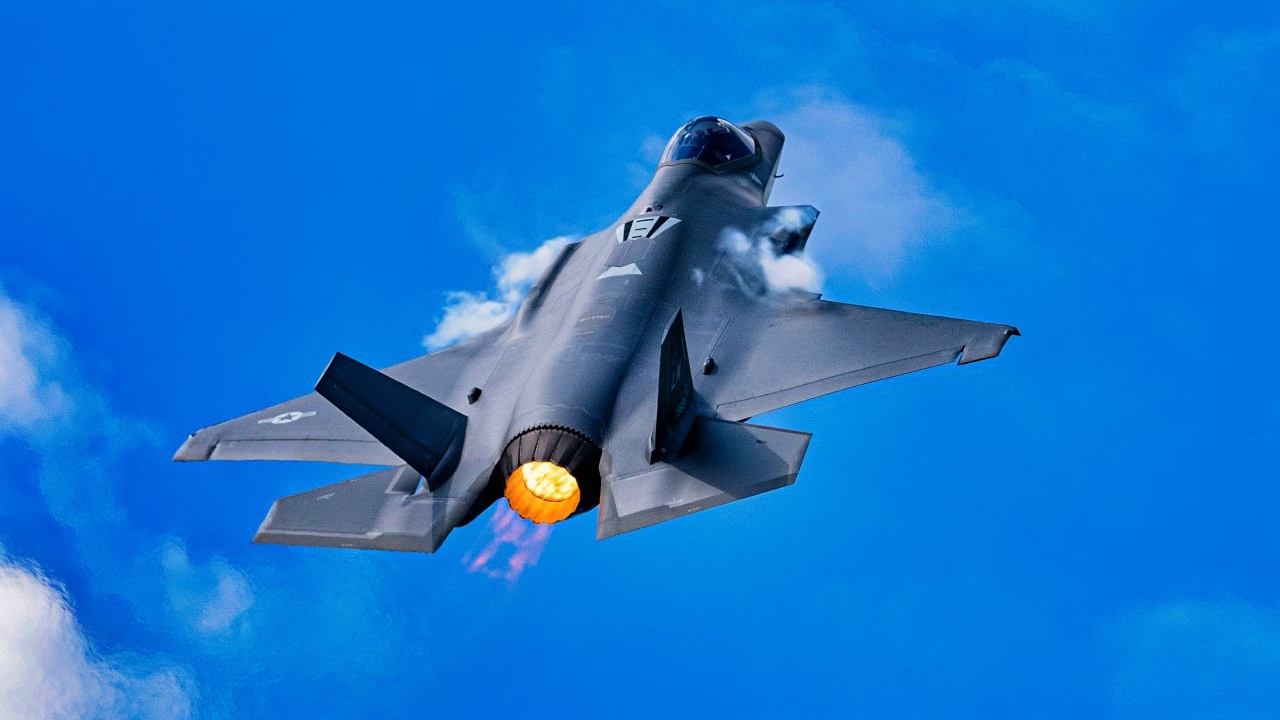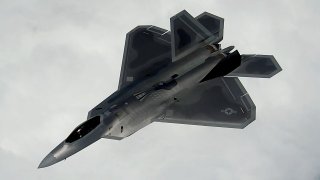China Was Watching: F-22 and F-35 Fighters Took Part in 'Hot Pit' Drill
During Exercise Pitch Black 24 in Australia's Northern Territory, U.S. Air Force F-22 Raptors and Royal Australian Air Force F-35A Lightning IIs participated in a "hot pit" refueling exercise, a key component of the Agile Employment Concept (ACE).
Summary and Key Points: During Exercise Pitch Black 24 in Australia's Northern Territory, U.S. Air Force F-22 Raptors and Royal Australian Air Force F-35A Lightning IIs participated in a "hot pit" refueling exercise, a key component of the Agile Employment Concept (ACE).
-This exercise, held at the remote RAAF Base Curtin, emphasized rapid refueling operations in austere environments, reducing ground time to around an hour.
-The drill demonstrated seamless integration between U.S. and Australian forces, showcasing their ability to deploy advanced fifth-generation aircraft efficiently in remote locations, underscoring their readiness to project air power swiftly across the Indo-Pacific region.
F-22s and F-35s Took Part in 'Hot Pit' Exercise in Australian Outback
The Australian Outback in the Northern Territory was the scene of the recently concluded Exercise Pitch Black 24, the largest in the military drill's 43-year history. It brought together 20 participating nations and more than 140 aircraft from around the world.
However, not all of the action was in the air.
Fifth-generation stealth fighters from the United States Air Force and Royal Australian Air Force were employed in a very special ground exercise – namely a hot pit refueling, which was conducted to highlight an "Agile Employment Concept" (ACE) that put ground crews to the test in an expedited refueling.
"This display of interoperable execution in an austere location demonstrated seamless force integration and efficient collaboration between Allies," the United States Indo-Pacific Command (PACOM) announced.
Hot Stuff
During the drills, U.S. Air Force F-22A Raptors from the 27th Expeditionary Fighter Squadron and RAAF F-35A Lightning IIs assigned to the 75th Squadron from RAAF Base Curtin, Australia, took part in the hot pit refueling in an austere location.
Such exercises serve to push the crews to the same limits as the pilots, as hot pit refueling is meant to dramatically reduce the time the aircraft spends on the ground. Instead of the normal four to six hours, planes can be fueled back up in around an hour, and back in the skies.
"We demonstrated the ability for USAF and RAAF to integrate F-22s with F-35s and deploy outback to a bare base in western Australia," said "Faux," an F-22A Raptor pilot with the 90th Fighter Squadron. "This mission was a proof of concept of our ability to fly, fight, and win any time, any place, anywhere with our Allies and partners. RAAF Curtin is a strategic location in ensuring maximum flexibility and the security of a free and open Indo-Pacific."
More Than Fuel Drops on a Remote Airstrip
Time was of the essence in this recent hot pit exercise, but it required careful planning to ensure everything went right. It involved airmen from the 27th Expeditionary Fighter Generation Squadron and RAAF personnel relocating key logistics for the operation. That included the movement of support personnel, fuel, and cargo and with the crews snapping into action as the aircraft landed.
It certainly was not business as usual for the ground crews.
"We're willing to take risks if it means better agility and combat capability," added Master Sgt. Luke Ashman, 27th Expeditionary Fighter Generation Squadron aircraft section chief. "The execution of this went very smoothly, the RAAF seems to operate on the same wavelength as us."
The hot pit exercise also served to remind that the two most advanced fifth-generation aircraft remain combat aircraft first and foremost, and don't require sophisticated facilities to operate from to get the job done. The aircraft, pilots, and support personnel showed that the Raptor and Lightning II are able to land in a remote location, be fueled up, and then back in the air where they can complete the mission.

"It is always a challenge going into locations that are not fully developed bases," said Faux. "Our goal in going was to continue to develop techniques and procedures for non-standard operating locations and prove that we can rapidly and effectively deploy air power to any location, no matter how remote. By bringing our support personnel and jets from both the USAF and RAAF, we were able to gather invaluable data points for utilizing this base for agile employment in the future."
Author Experience and Expertise: Peter Suciu
Peter Suciu is a Michigan-based writer. He has contributed to more than four dozen magazines, newspapers, and websites with over 3,200 published pieces over a twenty-year career in journalism. He regularly writes about military hardware, firearms history, cybersecurity, politics, and international affairs. Peter is also a Contributing Writer for Forbes and Clearance Jobs. You can follow him on Twitter: @PeterSuciu. You can email the author: [email protected].
Image Credit: Creative Commons.


